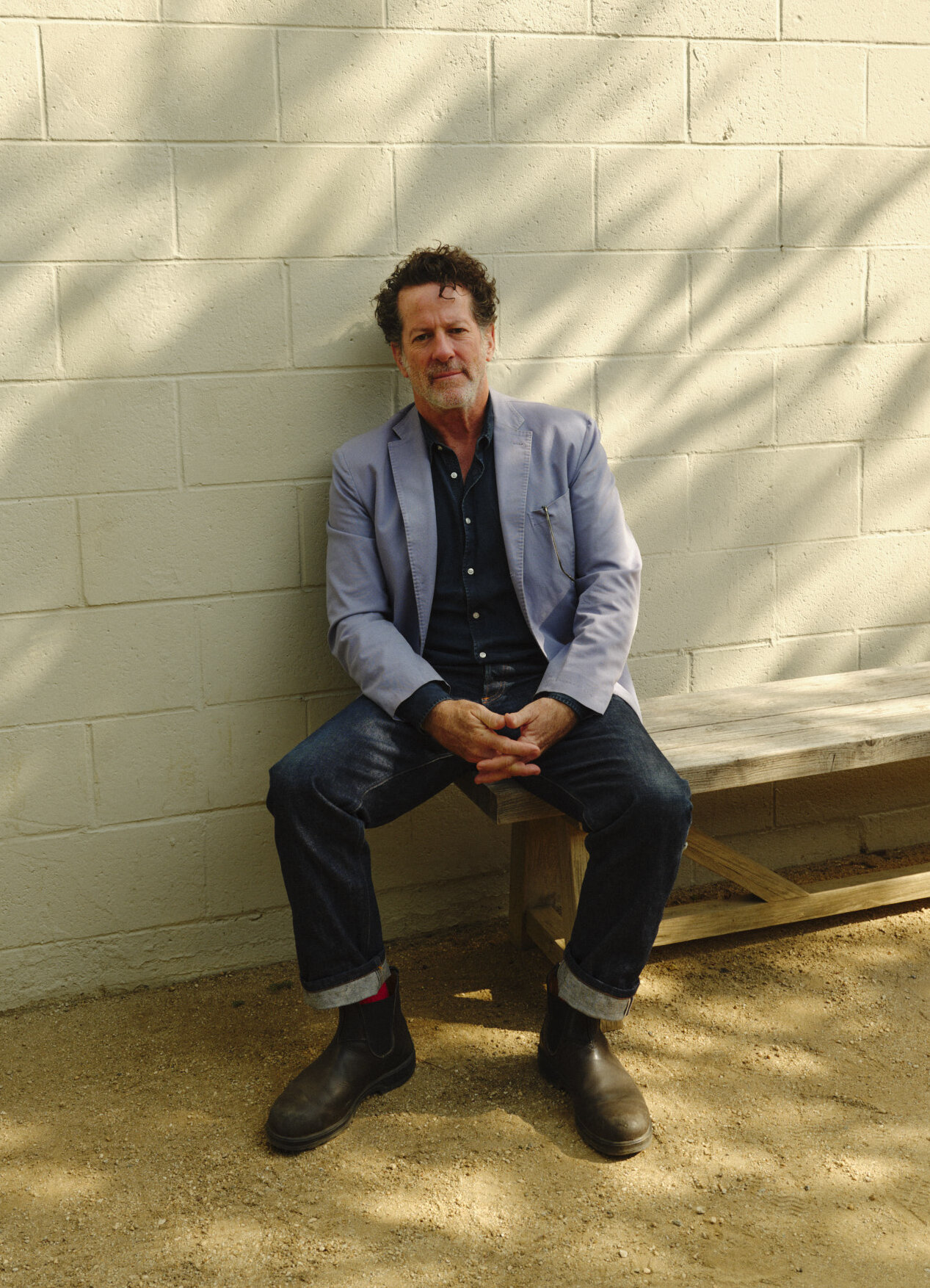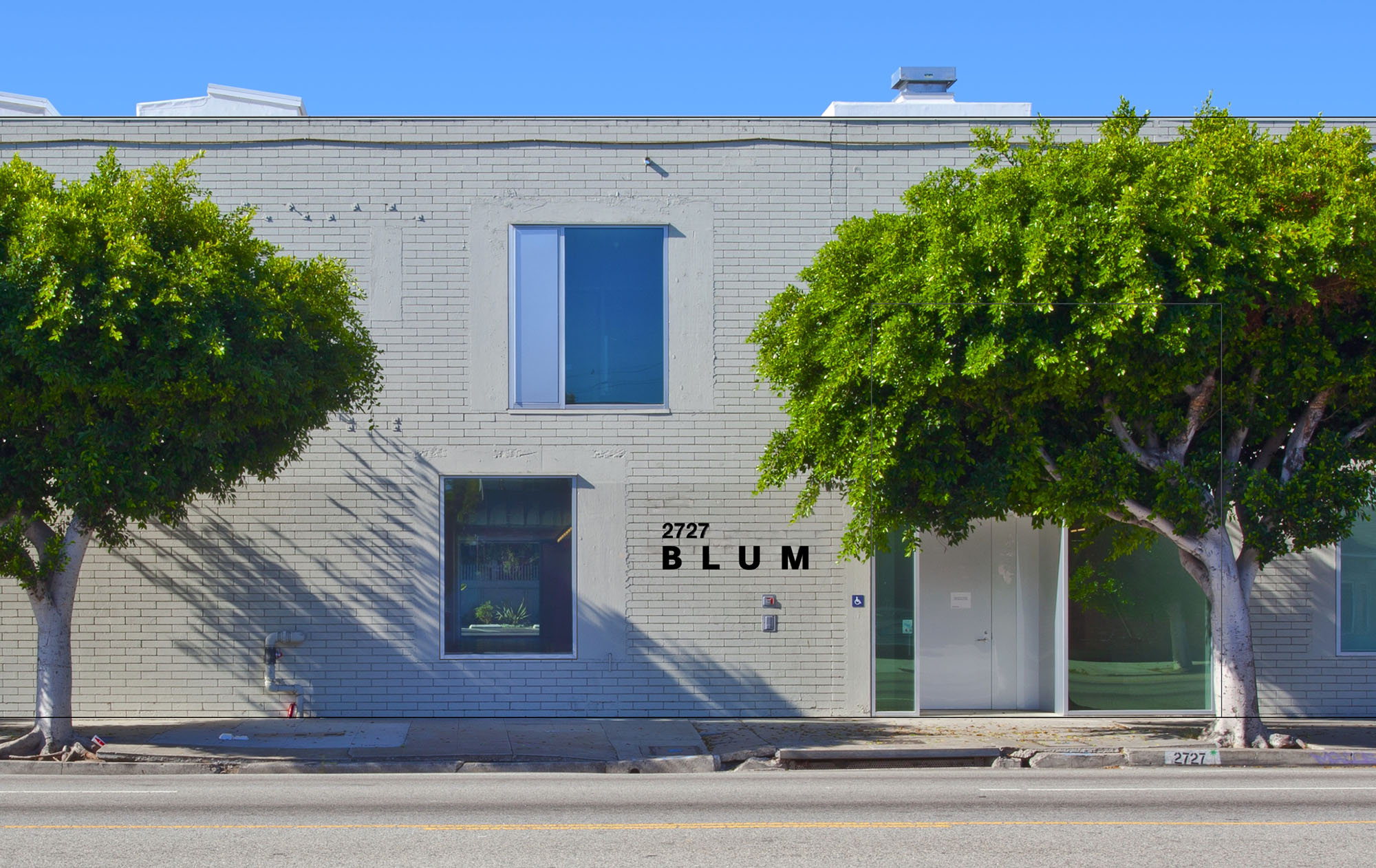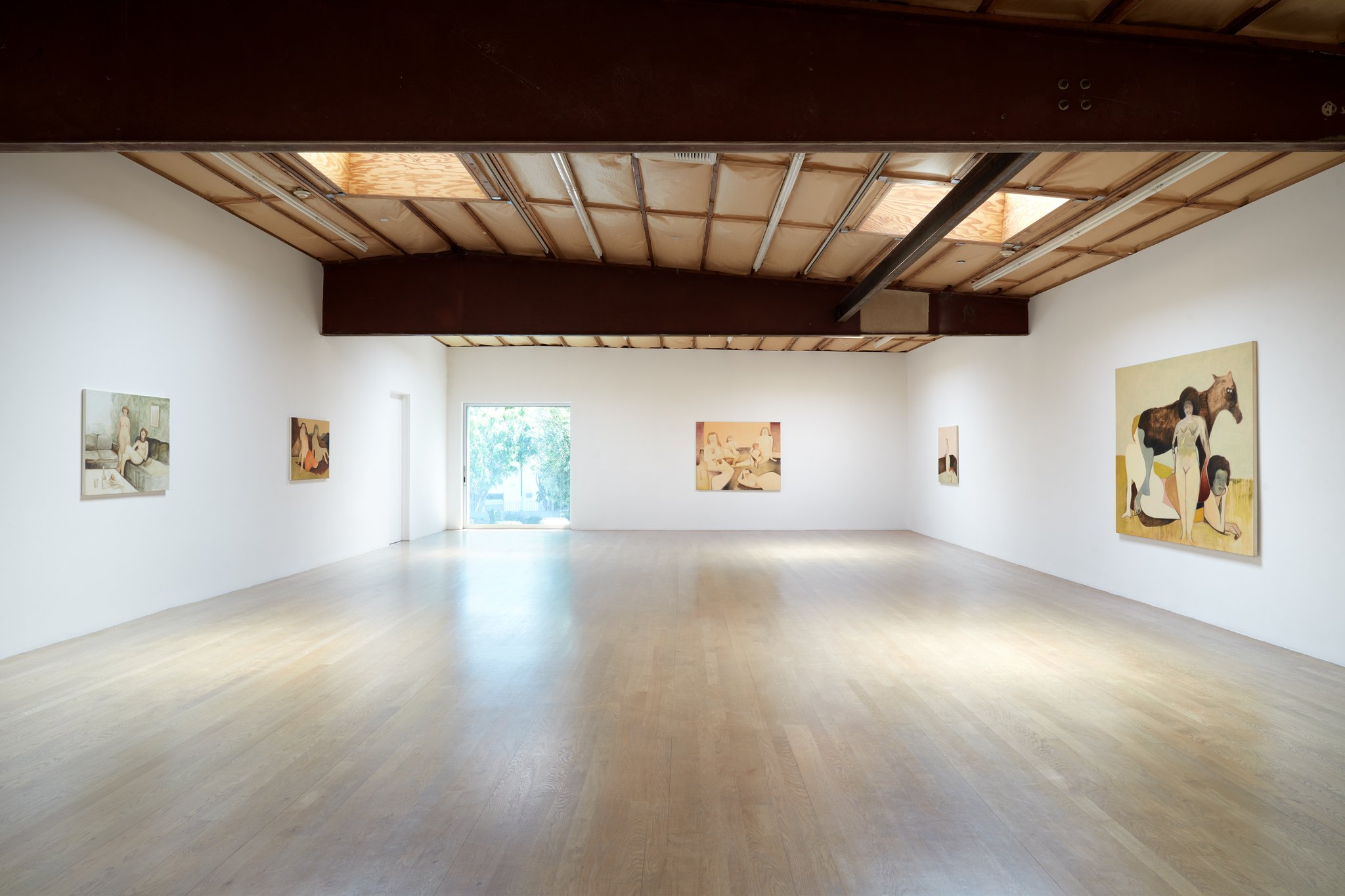
When the Los Angeles gallery Blum & Poe opened in 1994, its founders—two foul-mouthed surfer bros with very strong opinions about art—had a grand total of $25,000 to their names. It was enough to cover one year of rent and little else. Yet Tim Blum and Jeff Poe went on to build one of the most influential galleries in the United States, fostering the careers of then-unknown stars like Mark Grotjahn, Henry Taylor, and Yoshitomo Nara. The gallery’s trajectory mirrors the trajectory of the art world at large: increasingly international, capital-intensive, and oriented toward growth at any cost. Without Blum & Poe, it is difficult to imagine Los Angeles becoming the art-market capital it is today.
So when Blum—who took over after Poe left the business in 2023—abruptly announced last week that he would close the gallery, DMs and text messages began to fly. What did the news signal about the future of an art market that has been contracting for the past two years? What did it mean for the future of Los Angeles as an art hub? And if Blum plans, as he says he does, to stay involved in the art world, what would his alternative to a traditional gallery even look like?
In early interviews, Blum was quick to point out that his decision was a personal response to a system-wide problem of over-expansion and burnout. But as an art dealer, he has always been preternaturally skilled at identifying—and steering—major shifts in the industry before they become normalized. He was one of the first Western dealers to promote Japanese contemporary art in the U.S., one of the first to adopt a gigantic footprint for his gallery, and the first to move into the now-art-filled Culver City neighborhood in LA.
After the immediate frenzy from the announcement died down, CULTURED’s editor-in-chief Sarah Harrelson connected with Blum to reflect on his dream of working at the intersection of art and healing, his pessimism about Los Angeles, his enduring faith in art and artists, and what comes next. Will his decision to step off the treadmill become just another instance of Blum prefiguring the industry’s next chapter? That question will be up to the art world to answer.
Sarah Harrelson: How are you, Tim?
Tim Blum: I’m pretty wiped out. It’s been an intense 35 years, or longer, but it’s also been an intense couple of years, and it’s been a very intense six months. I guess the point is that this global, cultural, economic, social, paradigm shift is fucking real.
Harrelson: I know.
Blum: It’s real on levels that, you know, I think nobody really could have imagined or can really absorb quickly. Those of us who have been doing this for so long are complicit, and are a big part of building this global industry.
Harrelson: I mean, it’s not the same industry as when you started. You created it, fostered it in LA, and built it.
Blum: Even since ‘09, after the ‘08 crash, it’s been ever outward, upward, onward, with LA and with the entire art world. It was always about expansion—year in and year out. Economies kept growing, with sales volumes, and all the crap that we know well with the speculative circuit, and the notion of compressed careers, of doing one, two, or three shows and seeing spikes in value. All of that stuff has been well-read and well-written about.
The point is that I feel the core need to do this, because I was walking around my house all the time, and I was talking to either myself or my wife, and I’m saying, “I can’t fucking live like this anymore.”
I love what I do so fucking much.
Harrelson: I know you do, and you love art and artists.
Blum: It’s the most important thing. Obviously, I still have had a big appetite for making shit happen. I was on my way to opening this new space in New York. You don’t just do that kind of thing, and then, on a whim, decide not to. I do a lot of self work, I’m committed to evolving. When you do that, it inevitably affects everything, and how you navigate all the things that you deal with and love. It just suddenly just came through me: there wasn’t a different way I wanted to work in this current system.
Let’s go back to any kind of thing. Let’s cut the gallery down to 25 percent of what it is, back to basics. All my pals doing a Mark Selwyn vibe, or God bless Maxwell Graham, you know, all these people that are heroes, right? They’re heroes of mine, and I hope I have been something for them. But it’s not the time for me to do that. I want to create a different path for myself, and for the art and artists that I love.
How that will manifest? I have all kinds of things I could tell you.

Harrelson: What is the larger solve for the art world? Because these are all real problems that a lot of people are feeling right now—there is this pervasive burnout. How do we protect this world that we love?
Blum: I feel you so much. I’ve been doing this a long fucking time, and I guess I have been a visionary of sorts, because I somehow got myself on an airplane and flew to Tokyo, like a long motherfucking time ago, and I invested much of my life into that, plus, all of this other amazing shit that I’ve been able to do locally in LA and elsewhere.
My soul came screaming through my body one night, probably six months ago. It’s almost like I need to save my life because of all the things that you’re describing. These are conversations that a lot of us dealers… many don’t speak bluntly or openly. They are always hedging or cagey or hiding, keeping things close to the chest. But the fact is, and especially in Basel this last trip, I have never heard or seen more people speaking so bluntly about the crisis they’re feeling. The calls that I’ve received over the last two days from all kinds of colleagues at every level, from Andrew Kreps to Sadie Coles, who wrote me this beautiful note. You know, these are all my all my people that I’ve grown up with, right?
It is a crisis, and it’s hard to step off. It’s hard to reconfigure, and it’s hard to rejigger it.
I would have hoped for more communication and more community. I think the institutional problem is profound. Everywhere, but particularly in LA—I’ve expressed this to all my colleagues—there’s a completely disjunctive nature between the institution and the local community. People want community, but they don’t want to invest in it. LA feels like it’s become ever more tough again. It feels spread out and disparate.
I feel like the fires were a symbolic act of profound nature. It’s a profound thing that hasn’t really registered yet. It’s obviously the whole way in which Hollywood is getting cleaned out and gutted. People are leaving LA, as you know.
Harrelson: What impact will that exodus have?
Blum: Things ebb and flow. So I don’t know what the answer is. This is more rooted in care for the self and the family, in a way. My wife’s a healer of a very high order. We have always been talking about doing things related to art and healing. We have a long-term plan that we’ve been working on in Northern California related to that.
I don’t want it to sound like a California thing, but it’s actually something that’s quite real.
Harrelson: I can’t wait to hear more.
Blum: Nobody has the answer to the big questions. The art fair system is totally fucked. People keep doing it because they’re afraid to step off, because they’ll be penalized.
There’s that leverage that the system has over the individual gallerist, whether you’re a young dealer trying to make your way in the world, or make a name for yourself and your artist and compete with the bigger ones. Because if you don’t do it, the bigger galleries will absorb your artists and do it. It’s self-eating, like an octopus that eats its own leg, right? It’s just like, chop, chop, chop, and then it grows another one, of course, and keeps eating away.
Basel was a mess. I don’t see how it’s resuscitable, frankly. I adore the team and everybody there, but it’s clear to all the advisors and people that we work with who did go to Basel, they didn’t have clients, and they said, flat out, that their clients will never go to Basel because that era is over. Now, they go to Paris to go to Paris.
Harrelson: Do you think that this feeling in the art world is affecting the art being made today?
Blum: I don’t know. I don’t want to believe that. Yeah, honestly, I don’t want to believe that.
Harrelson: I don’t, either.
Blum: God damn it. I swear to God, I have ultimate faith in art, and artists. That is unwavering. I mean, I often don’t see so much great art, but when you do, you know it. God damn Sarah, it’s like, how many fucking galleries can the world absorb? How many artists in all those galleries can the world absorb? I’m from a generation where I’ve been successful, thank God, but I’ve accumulated so much stuff. Jason Rubell and I are shooting the shit, you know, real estate and art, and all these wonderful things that you can accumulate with success.
But the problem is, it’s like a cliche. I don’t have time to do anything else. Never. I know you know that because I see what you’re up to, which is, like, fucking impressive, as fuck-all. But, I mean, take care of yourself, my dear. I have, you know, other things… like I was talking to Mark Grotjahn yesterday, you know, of course, all my old school peeps.

Harrelson: I want to ask about your relationships with your artists, especially those you’ve had especially long relationships with. How’d they take it?
Blum: [Grotjahn] couldn’t have been more beautiful. He’s somebody I’ve known for 30 years. He’s also done a lot of self work, and has changed so much. He’s changed his life, so he’s much more tapped into that kind of thing. He was, of course, supportive and thrilled for me, because I am somehow going back to the primordial Earth for a minute. I need to reconnect with something that’s greater than this. It’s almost like it affects the way you see, absorb, and look at art.
Harrelson: You told ARTnews that your decision came down to all of the things that go through your head every day: transacting, running a company, production, all that kind of stuff. You want different things to run through your head. That resonated with me—because when you are running a company of any size, there’s just so much you have to do every single day. It’s hard not to have it take over, and to allow room for other thoughts to come in.
Blum: You know, a while ago I had with my pals Mendes Wood up in Germantown, and we had germinated this idea about about a consciousness project, because there are other people—dealers and otherwise—that are interested in a bigger view of the world that is beyond the transactional nature of the market. There’s a lot of us, and there’s no time or ability to navigate or propagate it.
And I feel like I need to explore that, coupled with—look, I’m an art dealer. I’m going to keep giving advice to artists or whoever wants advice, and transacting. Andrew Kreps called me yesterday. There has to be a way in which people can collaborate better and more together.
Harrelson: If your kid were going to open a gallery, and so much of what we’re describing is the result of a changing world, what advice would you give them?
Blum: I think that’s always the most interesting place to be, even as difficult as it might be. I don’t think that someone shouldn’t do that, but you have to go into it with keenly open eyes and understand the nature of what kind of art you’re propagating.
If it’s a non-market focused gallery, it’s a whole different thing, right? But if it’s a market-focused gallery, you just have to be aware of the fact that things are ever-changing, and you have to accept how it all unfolds. It doesn’t mean that you shouldn’t be supporting artists and making exhibitions. These are some of the greatest things that you can do.
Harrelson: You’ve had a brilliant path in the art world, and led with such passion and compassion. I wanted to talk to you about that, and make sure that we get that across. So many people are feeling this burnout.
Blum: It is burnout at every level. I don’t give a fuck what level you’re operating at, it’s just different measures, like trying to measure pain. It’s all subjective. But, I mean, you’re Zwirner doing things at that level, wondering why the fuck you spent all that money on a Western Avenue thing, or whatever it might be. Because, LA, I mean, where is everybody? They’re all gone.










 in your life?
in your life?

